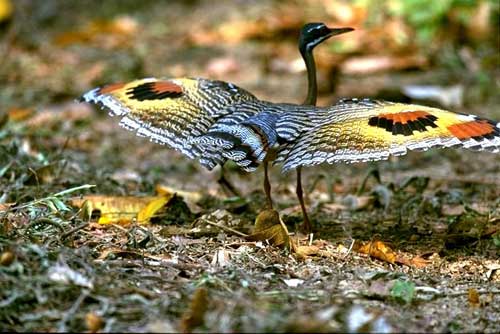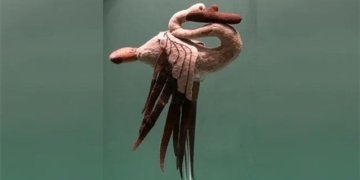In the Americas, there is a bird scientifically known as Eurypyga helias, which is very gentle, but that doesn’t mean they are easily bullied.
This elegantly shaped bird typically walks quietly. They have distinctive features: a long beak, a slender neck, and both the neck and legs are relatively long, with yellow feet and beak. Their soft feathers are brown-gray on the upper body, with black stripes on the lower body, a brown neck, a black head with white stripes, and a slightly brown chest.
When Eurypyga helias birds defend their nest against aggressive predators, they spread their wings like a shield—at this moment, both their wings and tail fan out to the maximum. The colored spots on their wings make carnivorous animals mistake them for two large eyes, deterring them from attacking. Recently, biologists have discovered that this wing-spreading behavior is meant to intimidate; for a long time, it was thought to be part of a mating ritual.

(Image: justbirds)
The “intimidating bird” usually lives alone or in pairs in forested areas near bodies of water. They feed on mollusks and insects, hunting in shallow waters or around rocks near the water.
Male and female birds look very similar on the outside, often camouflaging well due to their speckled feathers. The breeding season coincides with the start of the wet season—when there is enough mud for them to build a nest. The nest is constructed from materials sourced from trees and mud. Although both the male and female participate in nest-building, the nest often appears very crude and is typically built on tree branches.
The female lays only 2 dark yellow eggs per clutch. Both the male and female incubate the eggs for 27 days, and the chicks remain in the nest for about 21 days.
Eurypyga helias birds are distributed from southern Mexico to northern South America.




















































